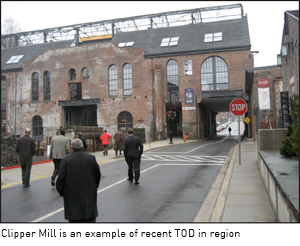Regional action plan developed with technical assistance of the Center for Transit-Oriented Development
 The Central Maryland Transportation Alliance has released "Central Maryland TOD Strategy: A Regional Action Plan For Transit-Centered Communities.
The Central Maryland Transportation Alliance has released "Central Maryland TOD Strategy: A Regional Action Plan For Transit-Centered Communities.
"The continuing and expanding prosperity of Central Maryland will rely on careful and prudent transit investments that continue to link jobs and housing, and people with their destinations, while creating the types of neighborhoods in which people will want to live," notes the report's executive summary.
Technical assistance for this study was provided by the Center for Transit-Oriented Development.
"TOD should not be thought of as a one-size fits all development solution, but rather a paradigm shift to focus on creating high-quality, strong communities connected by a multi-modal transportation network," the report states. "This report identifies key challenges and opportunities to move toward the transit-oriented development end of the spectrum, as well as identifying key locations, strategies, and tools for accomplishing this shift."